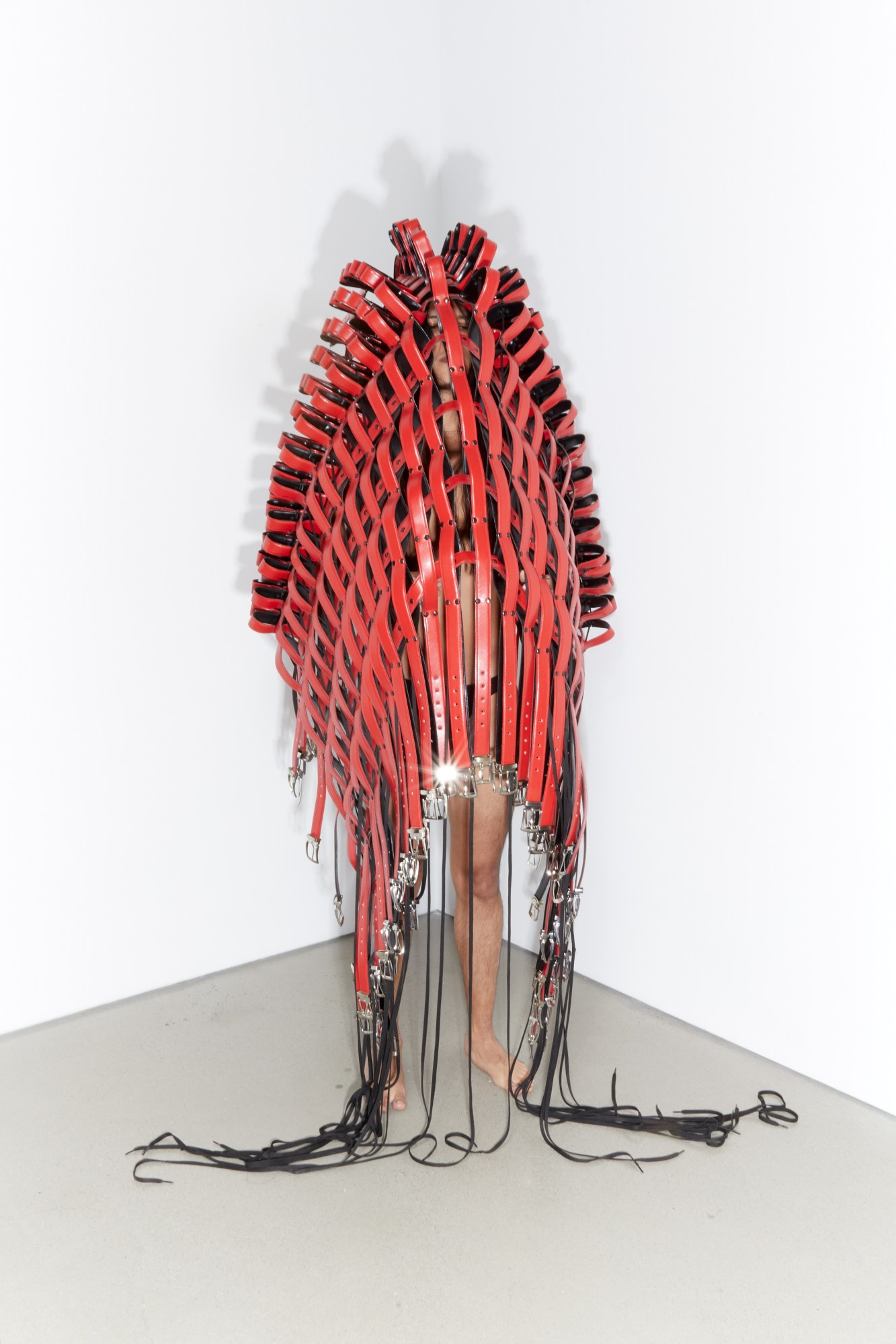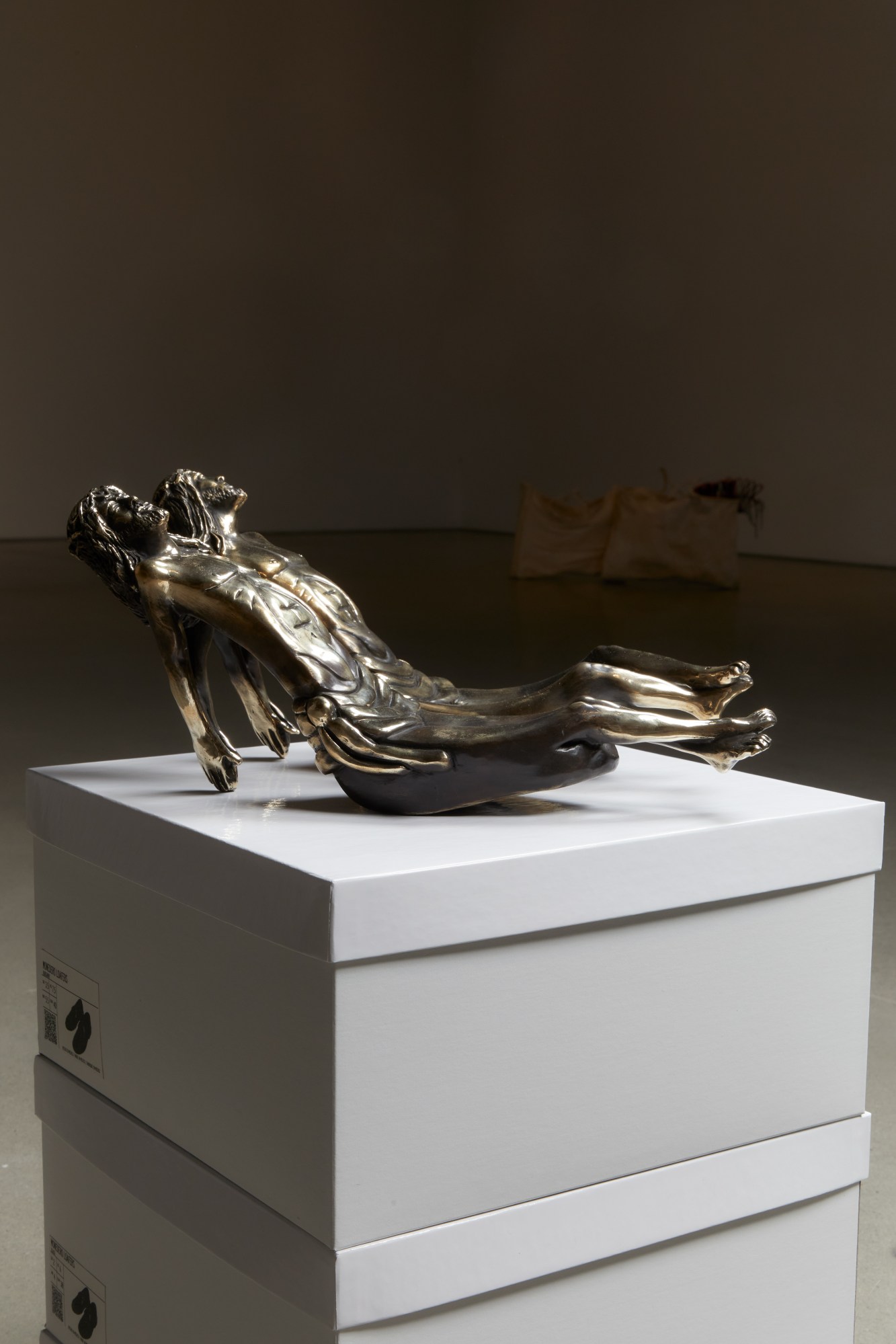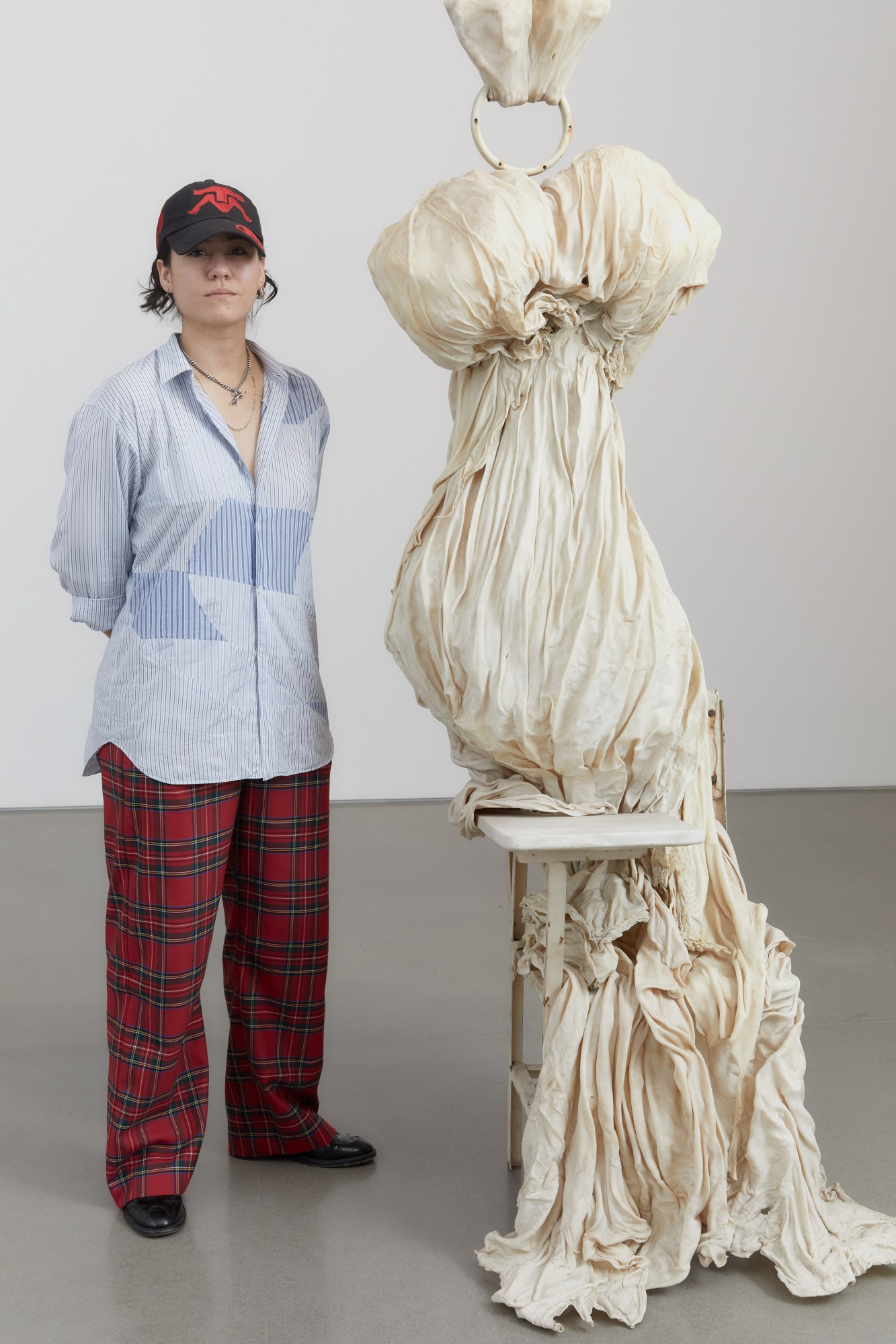Bárbara Sánchez-Kane may be best known for her namesake clothing line, but you won’t see her latest work showcased in a runway show. The artist’s first-ever solo exhibition, ‘New Lexicons for Embodiment,’ at kurimanzutto gallery in New York, explores the intersection of art and fashion through sculpture.
The show, which opened last week and will be on display through October 21, 2023, begins with a pop-up shop of the artist’s latest fashion collection in the gallery’s foyer. Playful two-piece outfits are displayed on hangers that are actually tongs contorted to take on a new shape. As you walk deeper into the show, you will be guided by recurring colors, patterns, and textures. A bright red sculpture that looks like armor at first glance is actually made up of belts and laces. A design on muslin is actually made up of bobby pins and leather.

Bárbara, who alternatively uses she and he pronouns, uses these found materials to explore our relationship with clothing and consumption. Techniques like draping and fabric manipulation deconstruct items until they are mutated into what he describes as “monsters.”
For example, rawhide is seen throughout the exhibition. “Rawhide is so vulnerable that if you put water, it will melt and form,” she explains of her process. “The water will give the materiality a different sense and the smell will change. But still, it’s the same chunk of materiality.”
Techniques that are used in design, such as pattern repetition, help the artist convey how goods are sold. “That’s what [the] fashion industry does now: accumulate, remix, replicate, replicate again to penetrate people’s mind[s].”

There are elements of surrealism evident throughout the show, including metamorphosis and the distortion of reality. “It’s a process of becoming and becoming daily. “Maybe the next day [has] a contradiction of what you say the day before. And that’s okay. There’s nothing stable.”
Many of the sculptures are fluid in form to question our relationship with clothing, and blur the lines of what you see in a shop, he explains. “[There are] millions of ways to conform the sculpture, the true sculptures. So you never recognize the sculpture in the picture.”
Throughout the exhibition, you’ll also see influences of Bárbara’s upbringing on the Yucatán Peninsula of Mexico. “If you’ve been to Mexico, you’ll recognize a lot of the things you’re going to see in [the] exhibition,” he says. “Little like, hints. It’s like these dreams I have walking in the city, I become this spectator.”

For example, throughout the gallery space, you will notice shoe boxes from classic-looking loafers. On top of the boxes are shoes that have metamorphosized into coin holders and even human forms. These sculptures are reminiscent of Bárbara’s experiences shoe shopping for her past runway shows. It’s fitting that shoes play a vital part in the show, since the artist first started experimenting with sculpture by transforming his old heels.
Bárbara says she was always interested in fashion, but didn’t view it as a possible path for herself at first because she didn’t grow up in a creative family. “I guess I was very afraid,” he says.

Instead, she chose to follow in her family’s footsteps by studying industrial engineering. Then at age 22, the artist fell sick and found herself questioning her purpose for the first time. “That made me shake a little bit and be like, ‘why are you here?’ Actually, before that I was a little bit of a zombie.”
He decided to pursue a fashion design degree at Polimoda in Florence, Italy. After graduating, he did an internship with Bernhard Willhelm in Los Angeles before going back to Mérida to launch his brand in 2016.
When Bárbara started in fashion, she was very excited about it. But, something shifted after her first show, and she found herself losing interest in seasonal collections and consumption. “I can’t believe designers are expected to do two collections a year,” he says. It’s so hard working on a collection, it’s like months of process and there’s a five-minute catwalk. And you’re like, what? And then you’re already planning another collection.”

Working at such a fast pace leads to sacrifices and mistakes, he believes. The artist rejects this pressure to produce multiple collections a year by introducing a concept of slowness throughout her work. She’s created heavy garments that will inevitably slow your pace as you move through your day. Moving differently, he says, will then change your point of observation; perhaps you will be forced to sit down and become an observer for the first time. “It gives us this idea of an impossible fashion for this impossible reality we’re living now.”
If you’re wondering where the designer and artist will go from here, you may see a hint in her sculptures. “I always leave a little trace of what I want to do [next].”
‘New Lexicons for Embodiment’ at kurimanzutto gallery is on view in New York City through October 21st.

Credits
Photography Ben Taylor
